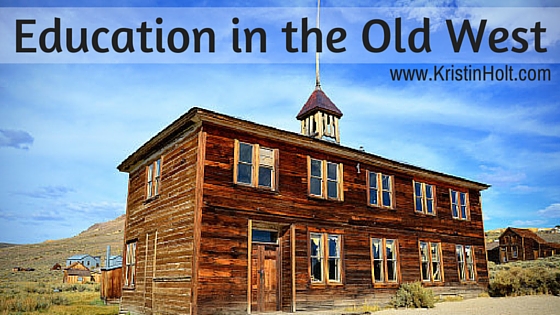From my old West research, I'd suggest you forget any exotic accent and stick with what we would now consider a 'midwest' accent, IOW none. Communities would not allow a 'foreign influence' to educate their children, and the townsfolk had a say and weren't afraid to say it.
Sad to say, yet in the mid to late 1800s, racism and segregation were commonplace, expected, and preferred. That also applies to national/cultural/religious bias. Immigrants from non-English speaking nations were treated as though parasites looking to capitalize upon the efforts of Americans (all from immigrant stock themselves, yet funny how folks view things after a generation or two). Each successive wave was derided by the previous once they were established. Language, color, and religion were the determining factors, otherwise, no one knew.
By the 1870s say, the Irish had been there long enough that their children spoke like other Americans, so their children were treated better than their parents experienced. The 'Dutchies,' Germans, Scandinavians, Northern Europeans didn't, however. So they were treated as second class citizens. Same-same for Slavs, Italians, etc. over their following waves. Religion made it worse--e.g., Jews in the US were still excluded from many golf courses until the 1960s, and in the 1870s were shunned if not driven out of communities. Anyone who was not like the general WASP stereotype had trouble, and communities would not let those 'lesser-people' teach their children.
It is why in the US many communities (even sections of large cities to even states) have a particular national or religious foundation.
That's something else to keep in mind. If your story is in a primarily white community (even though blacks made up a considerable number in the old West), the students will be white, no mix of races--so no Blacks, Asians, Hispanic, Mediterranean, etc. and definitely no Indigenous children. Their may have been rare exceptions, more so in larger cities, but a smaller town, no. Black communities were more flexible, yet a white teacher would have been shunned by the rest of society. Asians at the time kept to themselves and excluded others.
Terrible as it may be, the most racially, religious, and culturally diverse nation in the world at the time was the most segregated. And it was considered the right thing to do, and to buck the system meant more trouble than most people understand.
It doesn't make for a very PC/inclusive story, yet is how it was in most cases.
K2



